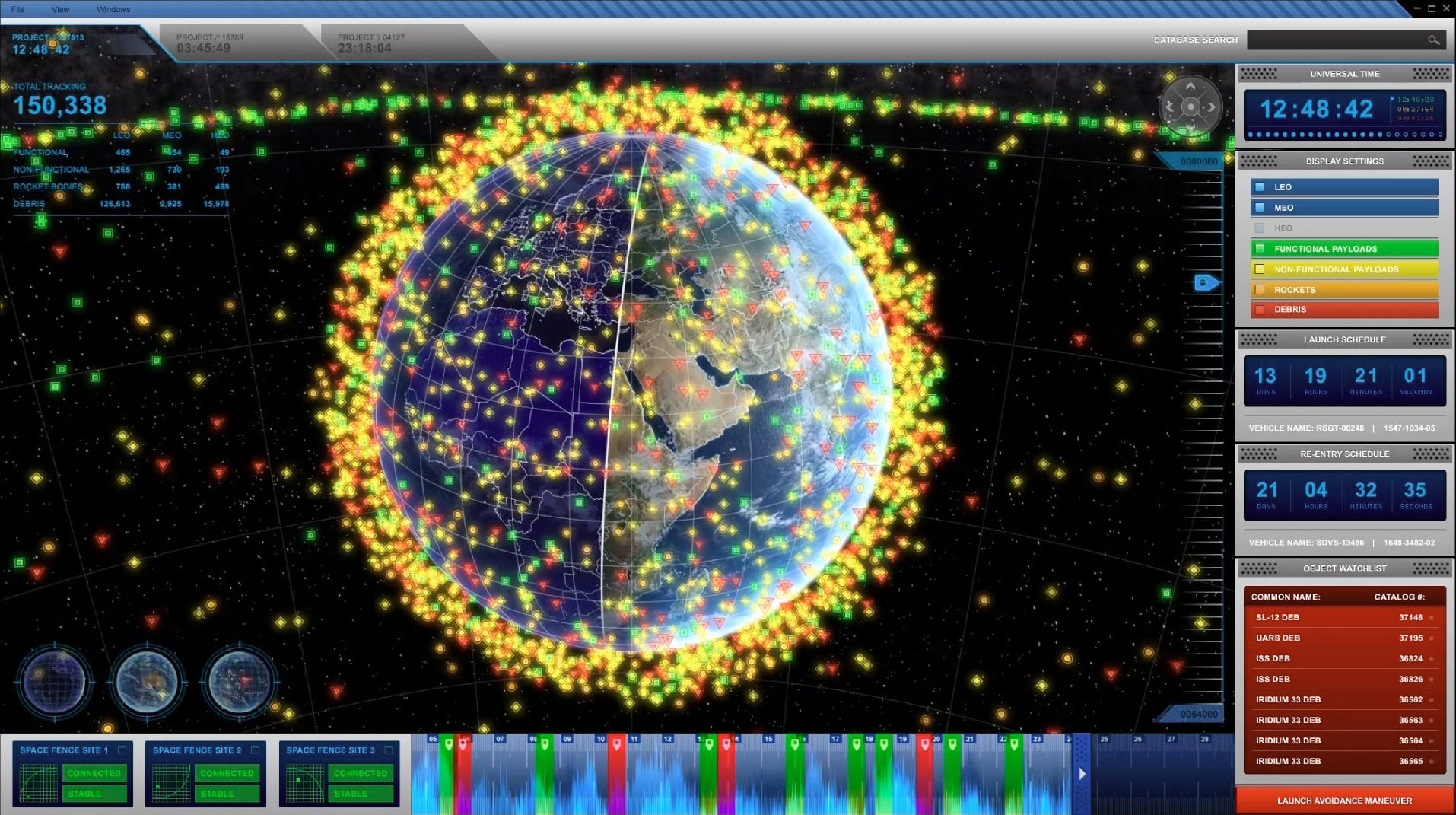[/caption]
Several times a year, the International Space Station needs to perform Debris Avoidance Maneuvers to dodge the ever-growing amount of space junk hurtling around in Earth orbit. Additionally, our increased dependence on satellites for communications and navigation is threatened by the risk of potential collisions with space debris. The existing system for finding and tracking objects, the Air Force Space Surveillance System, or VHF Fence, has been in service since the early 1960s, and is sorely out of date. But a prototype system called
Space Fence
has now been tested in a series of demonstrations, and successfully tracked more and smaller pieces of debris than the current system.
"The current system has the ability to track about 20,000 objects," Lockheed Martin spokesperson Chip Eschenfelder told Universe Today, "but there millions of objects out there, many of which are not being tracked. Space Fence will find and catalog smaller objects than what are not being tracked now."
Space Fence will use powerful new ground-based S-band radars to enhance the way the U.S. detects, tracks, measures and catalogs orbiting objects and space debris with improved accuracy, better timeliness and increased surveillance coverage, Lockheed Martin said. In recent tests, the Space Fence prototype proved it could detect more and smaller objects than the current system.
Space debris includes non-operational satellites, and leftover rocket parts from launches. Basically, every time there is a launch, more debris is created. Collisions between the current debris create even more pieces that are smaller and harder to detect. With the debris traveling at lightning-fast orbital speeds, even pieces as small as a paint chip could be deadly to an astronaut on EVA at the space station, or could take out a telecommunications or navigation satellite.
[caption id="attachment_94054" align="aligncenter" width="580" caption="A look at the Space Fence control center. Credit: Lockheed Martin"]
[/caption]
The developers of Space Fence say the new system will revolutionize what's called 'space situational awareness,' which characterizes the space environment and how it will affect activities in space.
"Space Fence will detect, track and catalog over 200,000 orbiting objects and help transform space situational awareness from being reactive to predictive," said Steve Bruce, vice president of the Space Fence program. "The Air Force will have more time to anticipate events potentially impacting space assets and missions.
The current system has tracking locations in the US only and has a huge 'blind spot' by not supplying information about debris in the southern hemisphere. But Space Fence will provide global coverage from three ground-based radar located at strategic sites around the world.
On February 29, 2012, the Air Force granted its final approval of Lockheed Martin's preliminary design, and they expect the new system's initial operational capability to be sometime in 2017.
"The successful detection and tracking of resident space objects are important steps in demonstrating technology maturity, cost certainty and low program risk," said Bruce in a statement. "Our final system design incorporates a scalable, solid-state S-band radar, with a higher wavelength frequency capable of detecting much smaller objects than the Air Force's current system."
For more information see the
Space Fence website,
and
NASA's Orbital Debris Program Office.
 Universe Today
Universe Today
